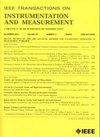Spectral Correlation Analysis for Planetary Gearbox Fault Diagnosis Under Time-Varying Speeds
IF 5.9
2区 工程技术
Q1 ENGINEERING, ELECTRICAL & ELECTRONIC
IEEE Transactions on Instrumentation and Measurement
Pub Date : 2025-07-10
DOI:10.1109/TIM.2025.3586359
引用次数: 0
Abstract
Planetary gearbox vibration signals feature amplitude modulation (AM) and frequency modulation (FM) and exhibit cyclostationarity. It is essential to identify the signal carrier and modulating frequencies for gear fault diagnosis, but this is very challenging under practical time-varying speed conditions. To address this issue, this article proposes an order–order spectral correlation (OOSC) analysis method, by leveraging the advantage of cyclostationary (CS) signal analysis in modulation feature extraction. First, the nonstationary signal under time-varying speeds is resampled in angular domain, making it order-stable relative to the rotating frequency. Then, the discrete random separation (DRS) is applied to the resampled signal, to cancel interferences due to rotating frequency irrelevant components. Finally, the separated resampled signal is analyzed by spectral correlation (SC) in order–order domain. This proposed method generalizes CS analysis from constant speed to time-varying speed conditions and can reveal both the signal carrier and modulating frequency orders simultaneously, thus facilitating gear fault diagnosis under practical nonstationary conditions. It is experimentally validated on a wind turbine drivetrain test rig, and the sun gear faults in both planetary stages are successfully diagnosed.时变转速下行星齿轮箱故障诊断的谱相关分析
行星齿轮箱振动信号具有调幅(AM)和调频(FM)的特点,并表现出循环平稳性。在齿轮故障诊断中,信号载波和调制频率的识别是必不可少的,但在实际的时变转速条件下,这是非常具有挑战性的。为了解决这一问题,本文利用周期平稳(CS)信号分析在调制特征提取中的优势,提出了一种阶序谱相关(OOSC)分析方法。首先,对时变转速下的非平稳信号在角域中进行重采样,使其相对于旋转频率的阶稳定。然后,对重采样信号进行离散随机分离(DRS),以消除由于旋转频率无关分量引起的干扰。最后,对分离后的重采样信号进行序-序域谱相关分析。该方法将CS分析从恒转速推广到时变工况,能够同时揭示信号载波和调制频率阶数,便于实际非平稳工况下的齿轮故障诊断。在风力发电机传动系统试验台上进行了实验验证,并成功诊断出两行星级太阳齿轮故障。
本文章由计算机程序翻译,如有差异,请以英文原文为准。
求助全文
约1分钟内获得全文
求助全文
来源期刊

IEEE Transactions on Instrumentation and Measurement
工程技术-工程:电子与电气
CiteScore
9.00
自引率
23.20%
发文量
1294
审稿时长
3.9 months
期刊介绍:
Papers are sought that address innovative solutions to the development and use of electrical and electronic instruments and equipment to measure, monitor and/or record physical phenomena for the purpose of advancing measurement science, methods, functionality and applications. The scope of these papers may encompass: (1) theory, methodology, and practice of measurement; (2) design, development and evaluation of instrumentation and measurement systems and components used in generating, acquiring, conditioning and processing signals; (3) analysis, representation, display, and preservation of the information obtained from a set of measurements; and (4) scientific and technical support to establishment and maintenance of technical standards in the field of Instrumentation and Measurement.
 求助内容:
求助内容: 应助结果提醒方式:
应助结果提醒方式:


